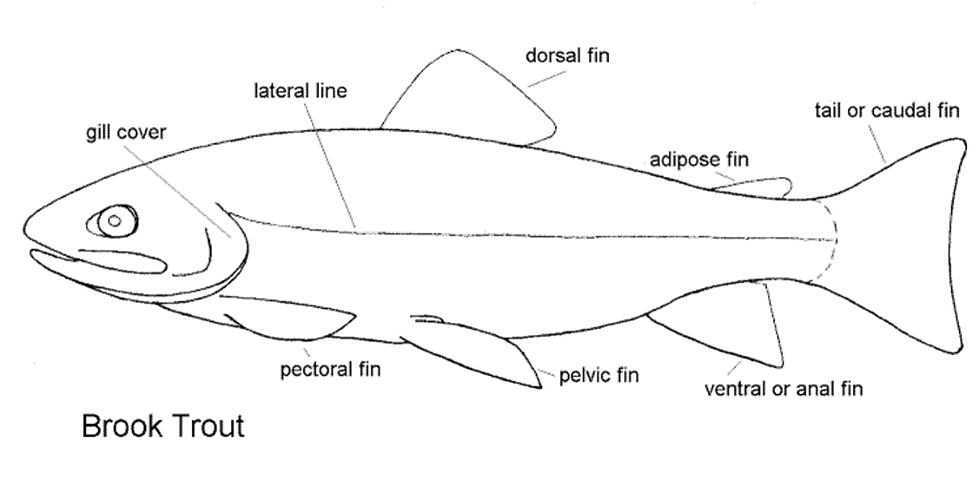Genetic population structure of the round whitefish
- bkamermans8
- Oct 22, 2021
- 2 min read
Updated: Dec 10, 2021
Citation: Thomas D. Morgan, Carly F. Graham, Andrew G. McArthur, Amogelang R. Raphenya, Douglas R. Boreham, Richard G. Manzon, Joanna Y. Wilson, Stacey L. Lance, Kimberly L. Howland, Paul H. Patrick, and Christopher M. Somers. Genetic population structure of the round whitefish (Prosopium cylindraceum) in North America: multiple markers reveal glacial refugia and regional subdivision. Canadian Journal of Fisheries and Aquatic Sciences. 75(6): 836-849. https://doi.org/10.1139/cjfas-2016-0528
Purpose of study: Round whitefish (Salmonidae; Coregoninae; Prosopium cylindraceum) is a widespread species that has become a conservation concern in several regions of North America. Morgan et al., 2018 performed genetic analyses of round whitefish from 17 sites across its range using nine microsatellites, two mitochondrial DNA (mtDNA) loci, and 4918 to 8835 single-nucleotide polymorphism (SNP) loci. Analyses identified deep phylogenetic division between eastern and western portions of the range, likely indicative of origins from at least two separate Pleistocene glacial refugia.

Methods: Tissue samples (pectoral fin clip, adipose fin clip, or muscle stored in 95% ethanol or lysis buffer) were obtained for round whitefish from various sites across North America and one site in eastern Russia. Genomic DNA was extracted from 414 samples of round whitefish
tissue following the manufacturer’s guidelines (Genomic DNA Isolation Kit, Norgen Biotek Corp., Ontario, Canada).

Key words:
microsatellites - portions of the mitochondrial control region (D-loop) and cytochrome
c oxidase subunit I (COI) barcode regions were amplified using polymerase chain reaction (PCR) for 124 round whitefish individuals representing 7–12 samples from each site, with the exceptions of Russia (n = 3) and the Rat River site in the Yukon (n =4).
The mitochondrial cytochrome oxidase subunit 1 (COI) gene is one of the most popular markers used for molecular systematics. Fragments of this gene are often used to infer phylogenies, particularly the region near the 5'-end, which is used by the DNA Barcoding Consortium.
The Consortium for the Barcode of Life (CBOL) is an international initiative devoted to developing DNA barcoding as a global standard for the identification of biological species. CBOL has more than 130 Member Organizations from more than 40 countries.
The Displacement (D-loop) region contains the leading strand for the origin of replication and a number of major promoters for transcription of the mitochondrial genome.
single-nucleotide polymorphism (SNP) - A single nucleotide polymorphism, or SNP (pronounced "snip"), is a variation at a single position in a DNA sequence among individuals. Mutation is any kind of variation in the genome, including addition, deletion, duplication, substitution and... .But SNPs are just single-nucleotide substitutions of one base for another that occur in more than one percent of the general population. And frequency of mutation is less than one percent.
Results:
Analyses identified levels of subdivision and gene flow consistent with the hydrological connectivity of the Great Lakes.
The major mechanisms driving genetic population structure are most likely (a) origins in at least two separate glacial refugia representing current eastern and western parts of the round whitefish range and (b) barriers to gene flow presented by the hydrologic connectivity of currently occupied aquatic systems.
Lake Ontario and Lake Huron are key populations for long-term management of genetic diversity and stock structure in the Great Lakes region.

They propose that Lake Ontario round whitefish are differentiated from those in the upper Great Lakes, and Lake Huron may be an important feeder lake for others in the system.

link link link link link link link link link link link link link link link link link link link link link link link link link link link link link link link link link link link link link link link link link link link link link link link link link link link link link link link link link link link link link link link link link link link link link link link link link link link link link link link link link link link link link link link link link link link link link link link link link link link link link link link link link link link link link link link link link link link link link link link link link link link link link link link link